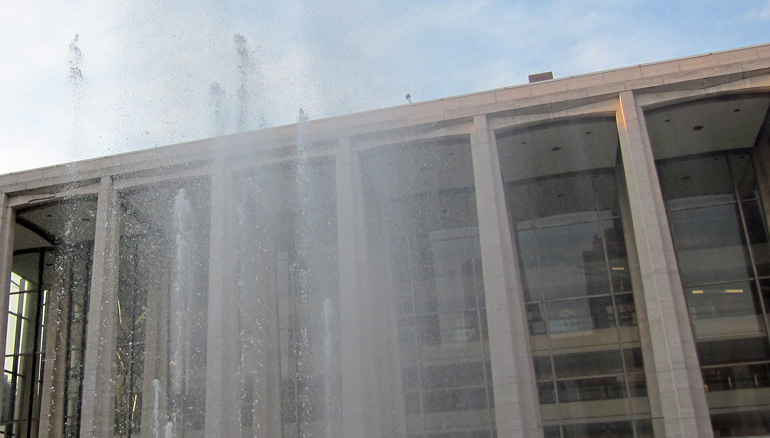Weekend Diary:
Danish
Saturday, 18 June 2011
What I’d very much like to know is how many New Yorkers bought tickets to one of the Royal Danish Ballet’s six performances here this week because Jennifer Homans’s chapter about August Bournonville, in her magisterial but deliciously readable history of ballet, Apollo’s Angels, inspired them to do so. It can’t have been just me.
Kathleen liked the evening’s offerings very much, although when she told me that the company’s disciplined attention to detail reminded her of the title character in Coppélia (a mechanical doll), I had to quibble. I saw some of the most fluid, “natural” dancing ever. It was as though the members of the RDB spend their lives offstage as well as on- leaping effortlesly into the ether and floating across the room on point.
What’s specatacular about the Royal Danish Ballet is the complete absence of the spectacular. The dancing is very fine, and often intoxicating, but it is never showy. The reason why I think there were other Homans readers in the audience is that it would otherwise be suspicious for New Yorkers so vociferously to applaud understatement. This was a crowd that had a lot more in common with chamber music aficionados than with the opera crowd.
We saw La Sylphide, which I must confess to having confused, inattentively, with Les Sylphides (until Jennifer Homans straightened me out), and Act III of Napoli. or, as it is called in the program, Napoli, Act III. I suppose that the RDB must mount complete performances of August Bournonville’s Napoli ever now and then, out of professional courtesy, but most serious balletomanes will go to their graves without seeing more of this work than its final act, which, like the end of Nutcracker and Act IV of The Sleeping Beauty, is a chain of “characteristic dances” and showpieces without any narrative content. Back in my radio days, when I was first learning about ballet (a subject that I knew absolutely nothing about until I was twenty-three), Napoli, Act III was the cheesiest ballet in the repertoire, just on the basis of its title. First, Naples. Naples as imagined by a Danish ballet master. Stop right there. Second, the truncation — the third act performed “out of context.” That was then. Tonight, I sat through the first half of NA3 with slightly detached interest; the characteristic dances didn’t strike me as characteristic of much more than the Bournonville style. But then somebody clapped a tambourine, and the tarantella got going. What an orgy! I realize that that is not the best word to describe an ensemble that even at its most energetic never stumbled into incoherence. But most energetic is exactly what it was, a pile-up of couplings that amounted, almost, to one too many birthday presents. And then there was the finale!
La Sylphide is the first in a line of more sophisticated ballets, notably Giselle but also including, cousin-German-wise, Swan Lake; and it’s easy to reduce its mild, pantomimed melodrama to “precursor” status. But what I remember about it isn’t elementary, because the principals, Caroline Cavallo and Mads Blangstrup, were great actors as well as gifted dancers. Great actors can sell just about anything, and that’s why Mr Blangstrup’s Scottish bridegroom and Ms Cavallo’s elfin temptress blasted a niche in my memory whereby I will recall this evening. Being gifted dancers, they were able to act with their bodies, without speech. They showed me how an art form that imposes silence on its practitioners can be as eloquent as a Shakespearean monologueÂ

